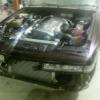Potential Damage With Blown Turbos
Announcements
-
Similar Content
-
Latest Posts
-
what do you mean dead platform? People buy older, out dated and less power cars on "Dead platforms" for over $65k all the time.
-
That is really nice! Very nice finish when you have an oven to do the crinkling nice and evenly!
-
Lowest point on the car is 105mm now, so just legal and hopefully high enough to clear After paint, much happier with how it looks Before looked real 😝
-
I'll measure it up at the lowest point later and post it up Currently painting, with the oven all warmed up to 93°c
-






Recommended Posts
Create an account or sign in to comment
You need to be a member in order to leave a comment
Create an account
Sign up for a new account in our community. It's easy!
Register a new accountSign in
Already have an account? Sign in here.
Sign In Now